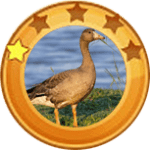- Home
- Shop
- Forest Series
- Grassland Series
- Desert Series
- Contact
- Home
- Shop
- Forest Series
- Grassland Series
- Desert Series
- Contact

Anser Series





Fabulous Gift for Your Kid
This 3-wheel scaled-down motorcycle features a fancy style of realistic appearance and can make your little one’s hand-eye coordination, confidence and courage be enormously improved during simulated racing riding experience.
Better Safety & Control
By controlling the switch pedal on the right footrest, this toy motorcycle can go forward and backward while turning left and right. The wheels can be quickly and smoothly stopped without any delay due to the brakes controlled by advanced electronic braking system.
Sturdy Bodywork
Due to the premium plastic material, the body of this ride-on motorcycle is uneasy to break even under the impact of high speed. So your kid can spare no effort in riding it.


CHARACTERISTICS
The Chipmunk is a member of the family Mammalia, Rodentia and Sciuridae. It is also known as the Striped Squirrel, the Timber Tiger and the Mini-bear. The body length among most Chipmunks ranges from 5.5 to 6.3 inches and the tail length is 5 Inches. Chipmunks typically weigh about 0.02 pounds and live about 5 to 10 years. They have small but prominent ears which face forwards, and small eyes on the sides of their heads. Most wild Chipmunks are lively.


Lorem ipsum dolor sit amet, consectetur adipiscing elit. Ut elit tellus, luctus nec ullamcorper mattis, pulvinar dapibus leo.


CHARACTERISTICS

RANGE AND HABITAT

DIET

BEHAVIOR
Habits and Lifestyle
The white-fronted goose has a circumpolar (global) distribution, breeding in northern latitude tundra in North America and all across Eurasia. They migrate to warmer climates in winter, including along parts of the Gulf Coast. This means some of them fly through Missouri. As with many other geese, once mated, pairs stay together for years and migrate in family groups. Greater White-fronted Geese forage in groups in agricultural fields and on lakes, often with other geese. They are frequently the first to flush when disturbed and fly in circles before coming back down. During migration, groups fly in “V” formation or in single file.Mating Habits
Greater White-fronted Geese nest on the ground in areas with dense patches of grass, sedge, and dwarf shrubs. Females choose a spot in wetter areas near lakeshores and wetland areas, but they also nest in drier upland tundra. Female Greater White-fronted Geese make a scrape in the ground and weave in surrounding grass and sedges to form a bowl. They line the nest with plant material and down feathers. Outside of the breeding season, Greater White-fronted Geese are social birds and often gather in groups. On the breeding grounds they defend the nest site, threatening intruders in a bent-over posture with the neck stretched straight out. On some occasions, males may physically attack each other. Greater White-fronted Geese form long-term pair bonds and stay together year-round. Pairs are often accompanied by their young for the first year or more, and the young often help their parents defend the nest. Juveniles don’t breed until they are around 2.5 years old, at which point they leave the family group. Greater White-fronted Geese return to the same breeding area year after year and often return to the same wintering area.
The Chipmunk is a member of the family Mammalia, Rodentia and Sciuridae. It is also known as the Striped Squirrel, the Timber Tiger and the Mini-bear. The body length among most Chipmunks ranges from 5.5 to 6.3 inches and the tail length is 5 inches. Chipmunks typically weigh about 0.02 pounds and live about 5 to 10 years. They have small but prominent ears which face forwards, small eyes on the sides of their heads. Most wild Chipmunks are lively.
The Red Squirrel, a member of the Sciuridae, is an arboreal, omnivorous rodent often referred to as a Forest Seeder and folklore as the Devil King Squirrel.
The Arizona Gray Squirrel, also known as the American Gray Squirrel, is a member of the family Rodentia and Sciuridae. It is small in size, with gray fur and a belly between white and cream. It has long ears, no tufts of fur and a fluffy tail edged in white. The body is about 16-20 inches long and weighs up to 1.4 pounds.
The Rock Squirrel, also known as Sao Maozi or Stone Mouse, belongs to the rodent and is a species in the family Sciuridae. The most common natural predators of the Rock Squirrel include bobcats, owls, eagles and snakes. Though the Rock Squirrel is cute, alert, and courageous, it is still considered a pest due to its habit of destroying crops.
The Abert’s Squirrel is a member of the genus Sciurus with a body length of 18-22.8 inches, a tail length of 7.5-9.8 inches and a weight of 2.2 pounds, and can live up to 10 years in the wild. Its most distinctive feature is tassels of fur about 0.8-1.2 inches long at the tip of its ears, which looks very interesting. In addition, it is alert and agile.

Influx of Russian White-Fronted Geese to Southeast England
Hundreds of Russian White-fronted Geese have arrived in south-east England during the last three days, as part of a major arrival of the species from mainland Europe.
Since Sunday 29 November, more than 100 sites between Norfolk and the Isle of Wight have logged ‘white-fronts’, with many records involving family groups of birds. The movement comes following a run of easterly winds from the Near Continent. On Sunday, the first wave of arrivals was detected, chiefly at coastal sites. Kent, Suffolk and Norfolk chalked up most of the records, with the highest count some 37 at Minsmere. Inland birds were noted, though, and indeed the second most westerly record so far – at Salford Priors GPs, Warwickshire – occurred.
This map, showing all first reports of Russian White-fronted Geese in south-east England since Sunday 29 November, demonstrates the extent of the influx.
On Monday 30th, heavy fog in many areas of south-east England resulted in a major fall of birds, with many inland records. This included plenty of single birds, including at incongruous locations such as Regent’s Park, London, as well as small flocks, some of which were in counties where groups are rare, including Bedfordshire, Oxfordshire and Surrey. New coastal records were still coming in and 55 at Montsale, Essex, and some 54 at Graveney Marshes, Kent, were of note, but both were eclipsed by a count of 100 at Sandwich Bay, Kent. Sussex enjoyed 110 new-in birds at eight different sites on 30th alone.
Despite a switch to a north-westerly wind overnight, which cleared any lingering murk and produced blue skies, more geese arrived today (1st), albeit in smaller numbers. This resulted in the Sandwich Bay flock swelling to around 400; some birds reorienting were perhaps involved in this count. Numbers on Sheppey (a traditional wintering site) hit 180, and across the South-East some 26 new sites logged the species by the end of the day. Big inland flocks persisted too, with 30 at Arundel, West Sussex, and 47 at Betchworth, Surrey.
As well as Russian White-fronted Geese, marked numbers of Tundra Bean Geese have also arrived on the back of this influx. At least 12 sites between Norfolk and Sussex have recorded the species since Sunday, including notable inland records at Godmersham and Sevenoaks, both in Kent. Bewick’s Swans too have arrived in better numbers than recent years, though the arrivals have been slightly further north with some 15 sites between East Anglia and Leicestershire scoring the species since Sunday.



Follow Us: